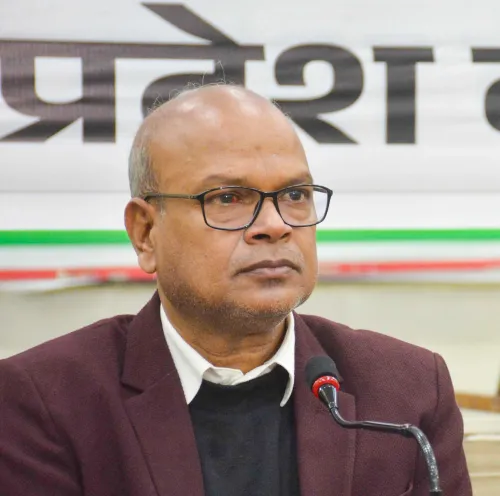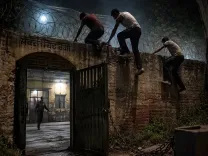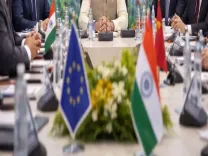What Are the Challenges Facing Jal Jeevan Mission?

Synopsis
Key Takeaways
- Water Scarcity: A significant hurdle in achieving universal water access.
- Funding Delays: Impacting project implementation timelines.
- Technical Training: Local youth are being trained for better water management.
- Government Initiatives: Interest-free loans and nodal officers to streamline efforts.
- Sustainability Focus: Long-term quality and maintenance of water infrastructure is critical.
New Delhi, July 24 (NationPress) As India strives to deliver clean drinking water to its rural population, numerous challenges persist. These include water scarcity in drought-prone and arid areas, geo-genic contamination of groundwater, scattered rural settlements, a shortage of technical personnel, and delays in fund allocation and legal approvals.
Rising material costs have further complicated project timelines.
This information was disclosed by the Minister of State for Jal Shakti, V. Somanna, in a written statement to the Lok Sabha on Thursday. The Central government has notably extended the ambitious ‘Jal Jeevan Mission (JJM) – Har Ghar Jal’ initiative until 2028, aiming for complete tap water coverage in every rural household.
This announcement highlights the ongoing challenges in implementation and the necessity for sustainable infrastructure. Launched in August 2019, JJM has achieved significant milestones, increasing tap water availability from 3.23 crore (16.7 percent) to over 15.67 crore rural households, achieving a national coverage of 80.94 percent as of July 21, 2025.
During her Union Budget 2025-26 address, Finance Minister Nirmala Sitharaman confirmed the extension with an increased financial allocation, currently under governmental review. The focus is now on not only coverage but also the long-term operation, maintenance, and quality of rural piped water systems.
To address these challenges, the government has undertaken various measures, including offering interest-free capital investment loans to states, appointing nodal officers to facilitate inter-departmental cooperation, and establishing state and District Programme Management Units (SPMUs & DPMUs).
The ‘Nal Jal Mitra Programme’ is also being rolled out to train local youth in the technical aspects of water management.
Additionally, the Jal Shakti Abhiyan: Catch the Rain campaign continues to promote community-led conservation initiatives, with recent themes emphasizing women’s empowerment and local action for source sustainability.










